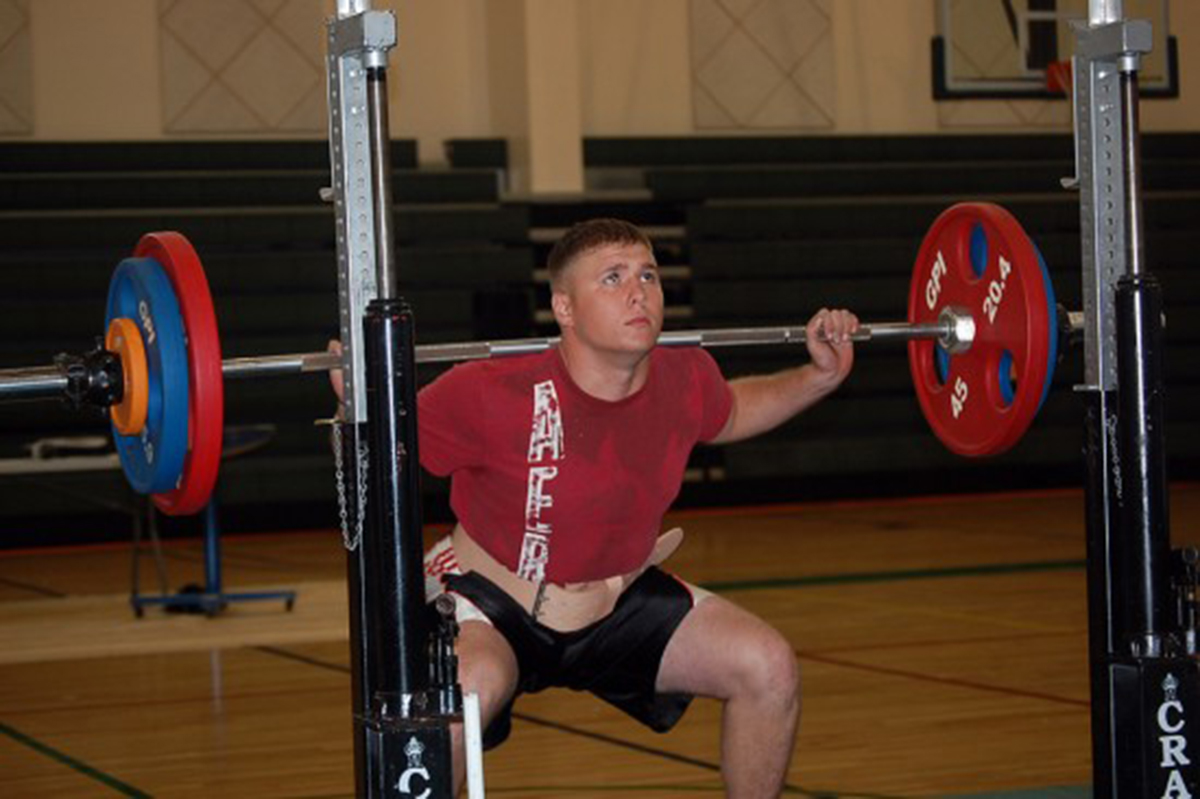Table of Contents
Powerlifting is comparing to weightlifting and bodybuilding relatively modern origin, and is very popular in Western Europe and North America. First formal competitions occurred in the mid 1960s, and is just as weightlifting and bodybuilding open to both men and women; it also just like weightlifting offers weight categories allowing athletes to display relative strength: however, powerlifters do lift over five times of their own body weight.

Powerlifting is also about weightlifting and it is about strength. Comparing to weightlifting powerlifting movements are shorter. Powerlifting is consisted of three events: the squat, the bench press, and the deadlift; and then the maximum weight lifted in each event is totalled for a final score.
In squat athlete stands under a racked barbell which is loaded with weight; than grabs the bar from behind, the bar is put onto the top of the back and rests on the trapezius muscles. Than the athlete walks clear of the rack and squats down (until the top of the thigh at the hip joint is lower than the top of the knee).
In bench press the athlete lies on a bench, while loaded barbell rests on racks above the eye level of the powerlifter. The athlete removes the bar from the racks with the help of one or more spotters. Powerlifter lowers barbell to the chest, pauses and then presses up to the full extension of the arms; and then carefully returns the weight to the rack. There are some additional rules that vary between states; however the powerlifter is disqualified if buttocks lift off the bench, the feet move during the lift or if body makes any extraneous movement during the lift.
Read More: Weightlifting: Lift Slow Or Lift Fast, That Is The Question Now
In deadlift athlete grasps the barbell from the floor and lifts until the legs and back are straight and upright, and the chest proud. Athlete then returns the barbell to the floor: athlete's back have to be straighten and knees locked in a balanced position. Athlete is disqualified if dropping the bar to the floor after the lift is finished.
Consistent training lays the foundation for continuous improvement, but this consistency should be paired with periodized training, where the intensity and volume are varied over time to optimize gains and prevent plateaus. Nutrition plays an undeniable role; fueling your body with the right balance of protein, carbohydrates, and fats supports muscle growth and recovery. Speaking of recovery, ensuring adequate rest, including sleep and active recovery techniques like stretching or foam rolling, is essential.
Your mental game is equally critical. A strong belief in oneself and mental resilience can sometimes make the difference in those challenging lifts. Safety should always be at the forefront; using appropriate safety measures, including spotters and safety racks, can't be emphasized enough. Engaging with a community, whether a powerlifting gym or online group, offers motivation and shared experiences. Lastly, staying updated with the ever-evolving world of powerlifting techniques and equipment can give you an edge and help you consistently improve.
- wlinfo.com
- image: www.dietandfitnessresources.co.uk
- Photo courtesy of Usodesita by Flickr : www.flickr.com/photos/tamaranai/514501463/
- Photo courtesy of USAG- Humphreys by Flickr : www.flickr.com/photos/usaghumphreys/5082660218/

